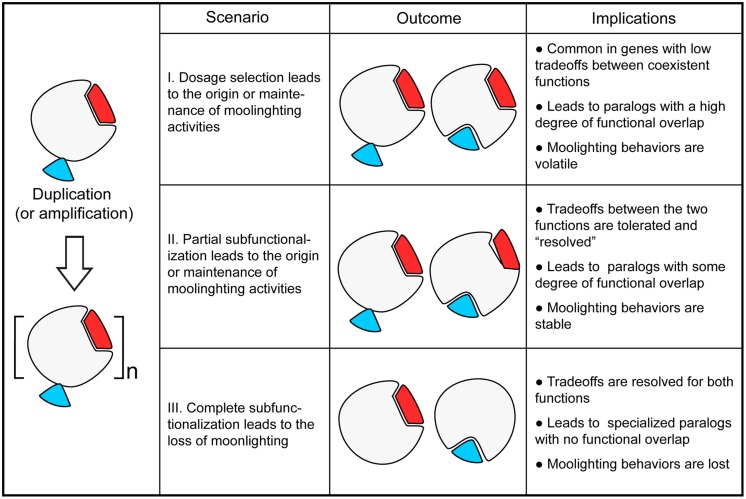FIGURE 1.
The fate of moonlighting proteins after gene duplication. The interplay between different mechanisms of gene evolution by duplication (including amplification) influence the origin, retention, and loss of moonlighting proteins. (I) Gene duplication may enable the origin or retention of moonlighting proteins over time by selection for dosage amplification of one or more molecular functions in the ancestor (e.g., yeast Rpl2A/Rpl2B). (II) Incomplete subfunctionalization of one or more molecular activities in the ancestor may enable the origin or retention of moonlighting behaviors as a result of neutral evolution (e.g., yeast Eno1/Eno2). In this scenario, the subfunctionalization may act on gene expression or protein activity, e.g., substrate specificity. (III) In contrast, duplication may result in the loss of moonlighting behaviors of one of the paralogs (e.g., yeast Gal1/Gal3), or of in both gene products (e.g., chicken argininosuccinate lyase/δ-crystallins) by complete specialization of their molecular activities.

